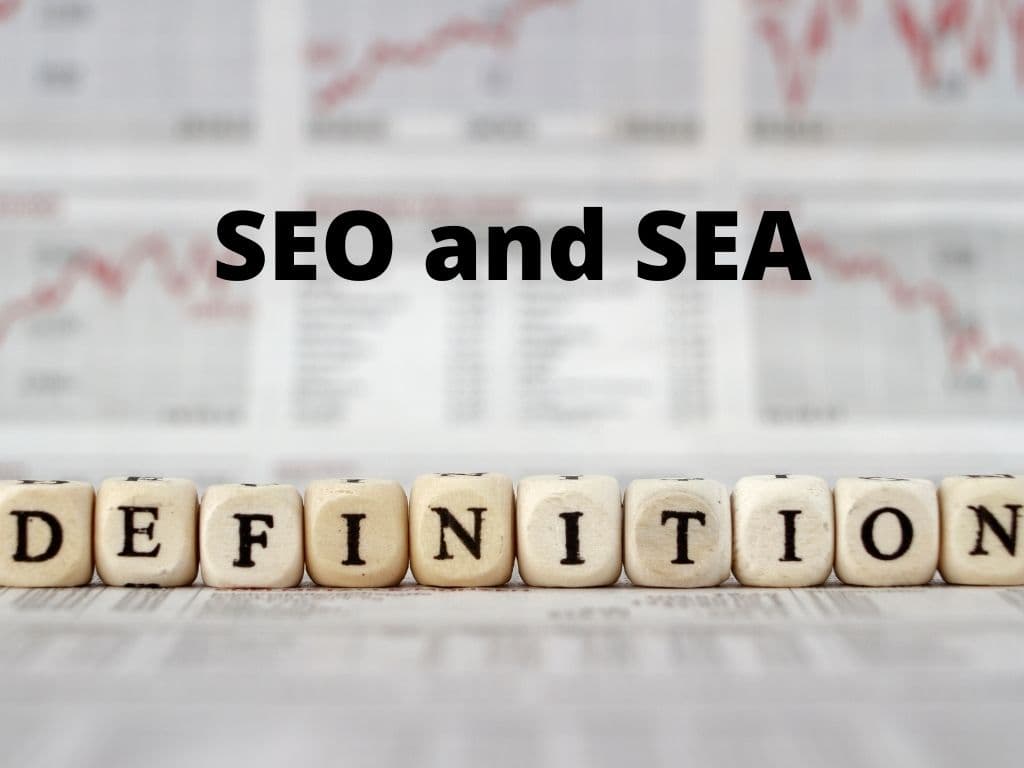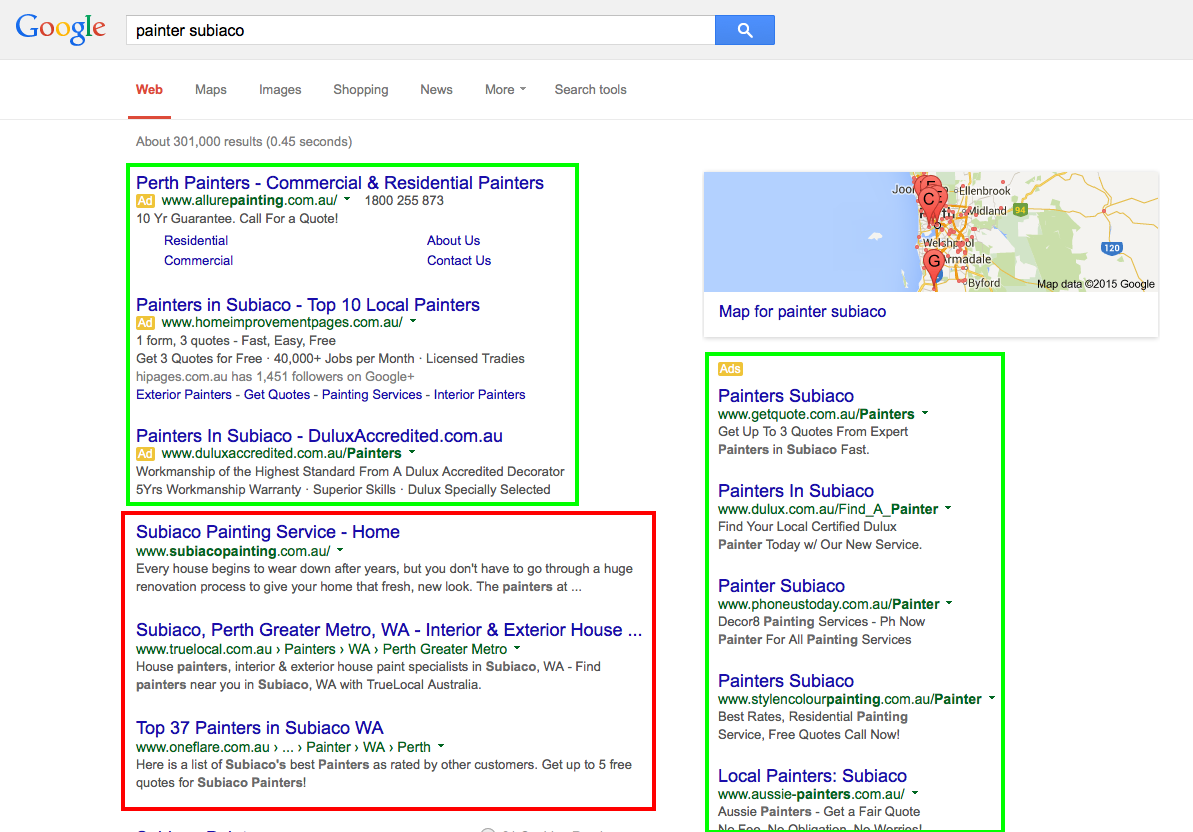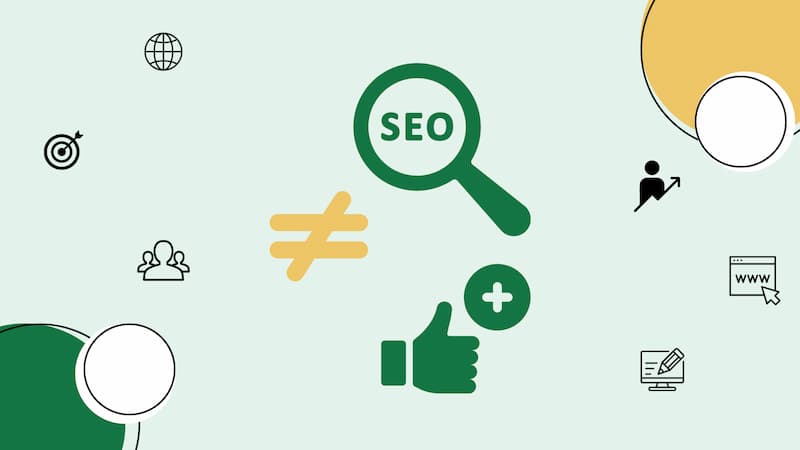In today’s digital marketing landscape, you might come across various acronyms – two of which, SEO and SEA, are often mistakenly used interchangeably. However, whilst they both aim to increase your website’s visibility, they indeed leverage contrasting strategies. This article aims to clarify the differences between SEO and SEA to help you understand which approach could suit your online business best, drawing on a breadth of industry knowledge and expertise. Throughout, you’ll gain insights into these two cornerstones of digital marketing, from the complexity of their processes to their potential impact on your site’s web traffic and ranking.

The Search Basics
Before analysing their differences, let’s first comprehend the rudimentary elements of SEO and SEA.
SEO: A Brief Definition
In the world of digital marketing, SEO, which stands for Search Engine Optimisation, is the process of tweaking and enhancing your website to improve its visibility in search engine results pages (SERPs). You’re essentially making your website more attractive to search engines like Google, Bing, or Yahoo. The idea here is to organically strengthen your website’s ranking which in turn increases its visibility.
SEA: What You Need To Know
On the contrary, SEA, or Search Engine Advertising, refers to the paid advertisements that show up at the top and side of search engine results pages. It’s often known as pay-per-click (PPC) marketing, where businesses pay each time a user clicks on an ad link. The goal is to drive immediate web traffic by buying your way into the top slots of search engine results.
The Core Purpose of SEO and SEA
Both of these techniques serve as crucial facets of any online marketing strategy, each designed with a unique objective.
Increasing Visibility With SEO
Since we live in an era where simple searches dictate our choices, it’s crucial for businesses to gain an online presence. This is where SEO comes in, by enhancing your website’s visibility; SEO is helping you gain exposure in the digital world. It aims to offer users informative and engaging content while matching search engine algorithms.
Driving Immediate Traffic With SEA
SEA is a faster, more direct approach to attracting web traffic. By investing in targeted ads, you can propel your website to appear at the very top of search engine results – drawing in immediate traffic. This method is particularly beneficial for new websites waiting to be indexed or for focusing on specific promotions or products.

The Processes Involved In SEO and SEA
Both SEO and SEA incorporate different stages for effective implementation.
Implementing SEO: A Step-by-Step Approach
Within SEO, the first step is to conduct thorough keyword research to identify what potential customers are searching for. Once you’ve compiled a list of relevant keywords, the next stage is optimising your website’s content and design. This includes writing high-quality, keyword-rich content, improving page loading times, using descriptive URLs, and ensuring your website design is responsive and user-friendly.
Running A Successful SEA Campaign
Running a productive SEA campaign, on the other hand, begins with setting a clear objective. Whether you want to increase brand awareness, drive traffic or generate leads, it’s essential to have a targeted approach. Once the goal is set, you perform keyword research, just like SEO, but the next step is to create attractive ad copies that will appeal to your target audience. Set a reasonable bid for your chosen keywords, and then you’re all set.
Cost Implications of SEO and SEA
Here’s a rundown of the cost-related factors for both:
SEO: Long Term Investment
SEO is a slow and steady process, but it’s a long-term investment. While it might not require a significant monetary investment to start, it does require a substantial amount of time and effort to maintain. Over time, strong SEO can generate a continuous flow of organic traffic without the need for ongoing costs.
SEA: Immediate But Recurring Cost
SEA is undoubtedly a quicker way to get results, but it comes with an ongoing cost. Each click on your ad costs a certain amount – this is your pay-per-click. So while you may see immediate results, stop the payments, and your position in the SERPs disappears.

Timeline for Results: SEO vs. SEA
The timeline for results varies significantly between the two:
Long-term Results With SEO
SEO isn’t a strategy that generates overnight success. It takes time to see its effects – days, weeks, even months. But once the results start pouring in, they usually sustain over long periods, ensuring a continued digital presence.
Immediate Impact with SEA
SEA, on the other hand, offers immediate results. As soon as your ad campaign goes live, your advertisement begins to appear in search results, drawing in traffic instantaneously. However, these results typically last as long as your ad campaign runs.
Keyword Utilisation in SEO and SEA
Keywords play a central role in both strategies:
Keyword Research For SEO
In SEO, keyword research helps you understand what terms your potential customers are using in their searches. By mapping these keywords to your website content, you improve your chances of ranking higher in SERPs.
Keyword Bidding In SEA
In SEA, keywords function a bit differently. You bid on keywords relevant to your business, and if your bid is amongst the highest, your ads will appear in the sponsored results when users search for these terms.

Analysing and Reporting in SEO and SEA
Both methods necessitate ongoing analysis and reporting to gauge effectiveness:
Measuring SEO Success
SEO success is measured by your site’s organic traffic, conversion rate, and search engine ranking. Various SEO tools like Google Analytics help to track these metrics and provide a detailed picture of your SEO performance.
Tracking SEA Performance
In SEA, key performance indicators include click-through rate, cost per click, and conversion rate. Google Ads offer built-in analytics tools to keep a tab on your ad performance and inform future campaign strategies.
Maintenance and Updates in SEO and SEA
To keep up with changing digital trends, regular maintenance is a must:
Ongoing SEO Efforts
SEO is not a one-and-done process. Google frequently changes its ranking algorithms, requiring regular SEO updates and tweaks. Continued keyword research, content update, and technical optimisations are part and parcel of maintaining your SEO ranking.
Keeping Up with SEA Trends
With SEA, it’s crucial to continually monitor your ad campaigns and optimise them according to performance metrics. Strategies, like adjusting bids for different keywords or testing different ad copies, help adapt to the evolving digital landscape.

Achieving Balance: When to Use SEO or SEA
The trick lies in understanding when to use which strategy:
Determining Your Marketing Needs
The choice between SEO and SEA often boils down to your specific marketing needs. If you’re attentive towards organic ranking and long-term growth, SEO is the way to go. On the other hand, if you need immediate visibility and the budget is not a constraint, SEA might serve you better.
Striking a Balance Between SEO and SEA
In truth, the most effective marketing strategy often involves a blend of both SEO and SEA. These methods complement each other well. Using SEO for long-term growth and using SEA tactically for immediate results or promotions provides a comprehensive digital marketing strategy.
The Future of SEO and SEA
Digital marketing is an ever-evolving landscape, and so are SEO and SEA:
Predicted Trends in SEO
The future of SEO is heading towards more personalised and user-focused strategies. With the advent of voice search, AI, and mobile-first indexing, SEO tactics will need to adapt accordingly. Building a deep understanding of user intent and delivering high-quality, relevant content will continue to be important.
Emerging Trends in SEA
As for SEA, automation, and machine learning are expected to play a significant role. Predictive advertising, improved ad personalisation, and incorporating AI to optimise bids and ad placements will transform the way SEA campaigns operate.
In a nutshell, both SEO and SEA have their respective strengths and can make a formidable combination when used together as part of a holistic digital marketing strategy. Familiarising yourself with each approach and understanding where they fit into your overall marketing strategy will enable you to make the most of it.

Hi, I’m Nicholas Bortoluzzi (but people often call me Nico).
I am the Founder and Director at SEO Lynx, an internet marketing agency operating in the UK and servicing clients worldwide.
The article on this page was written and curated by myself.